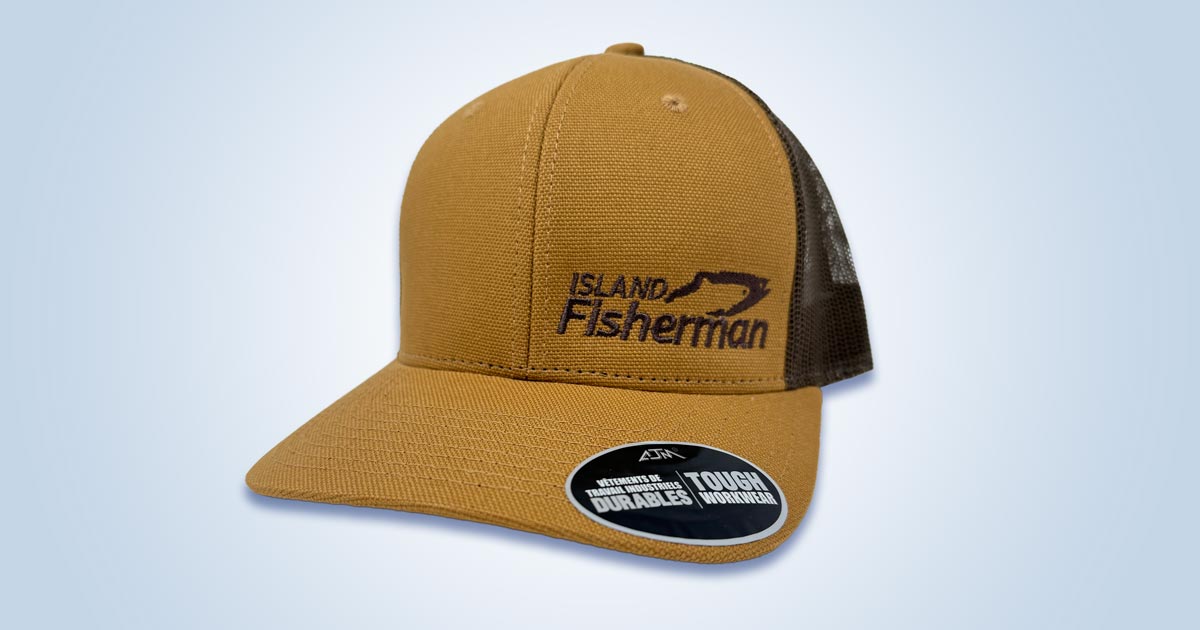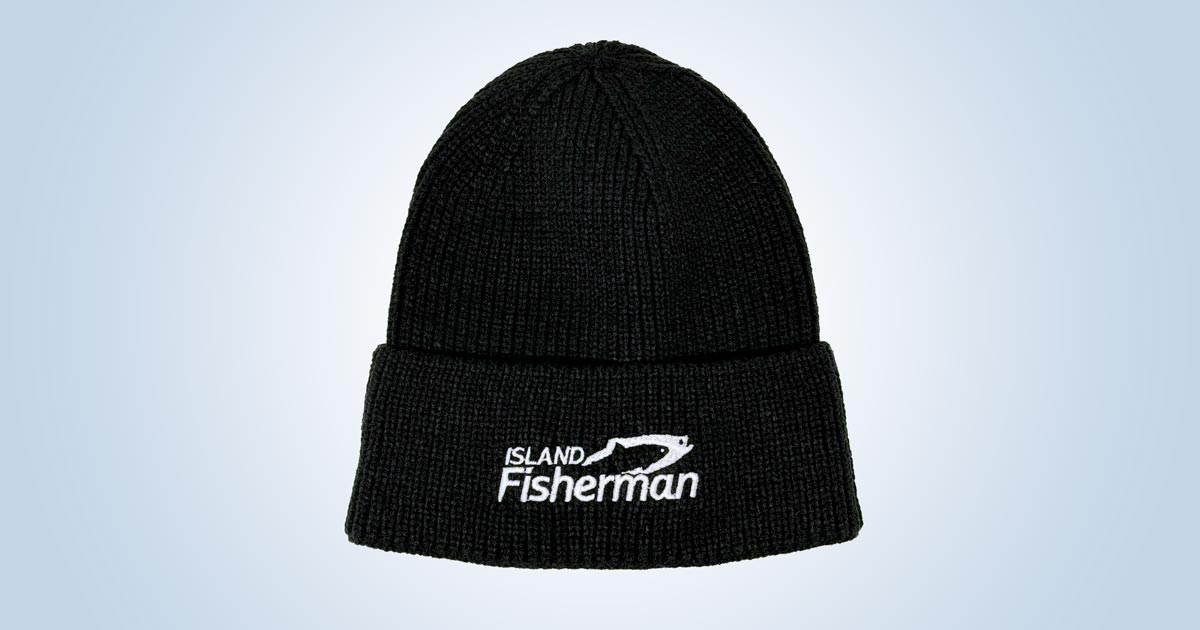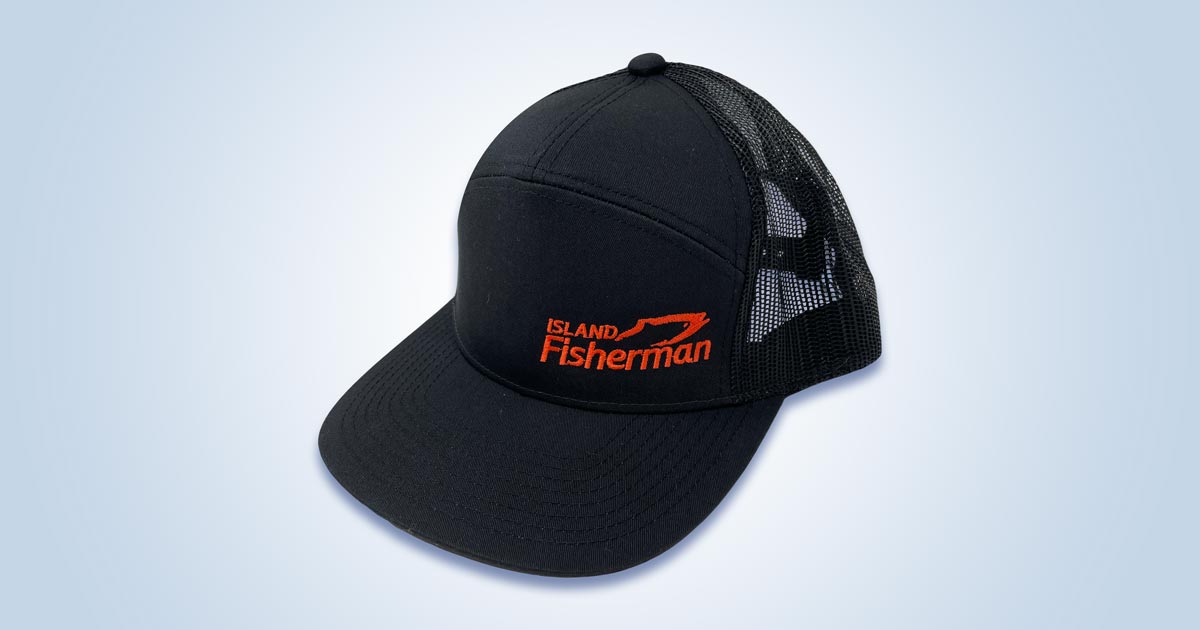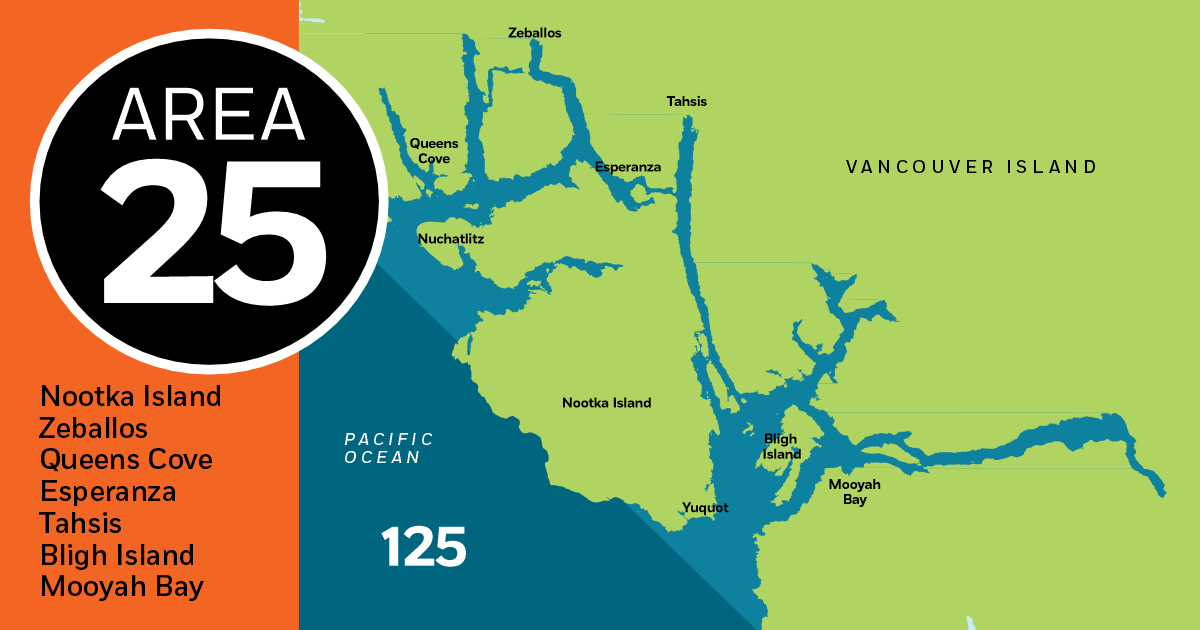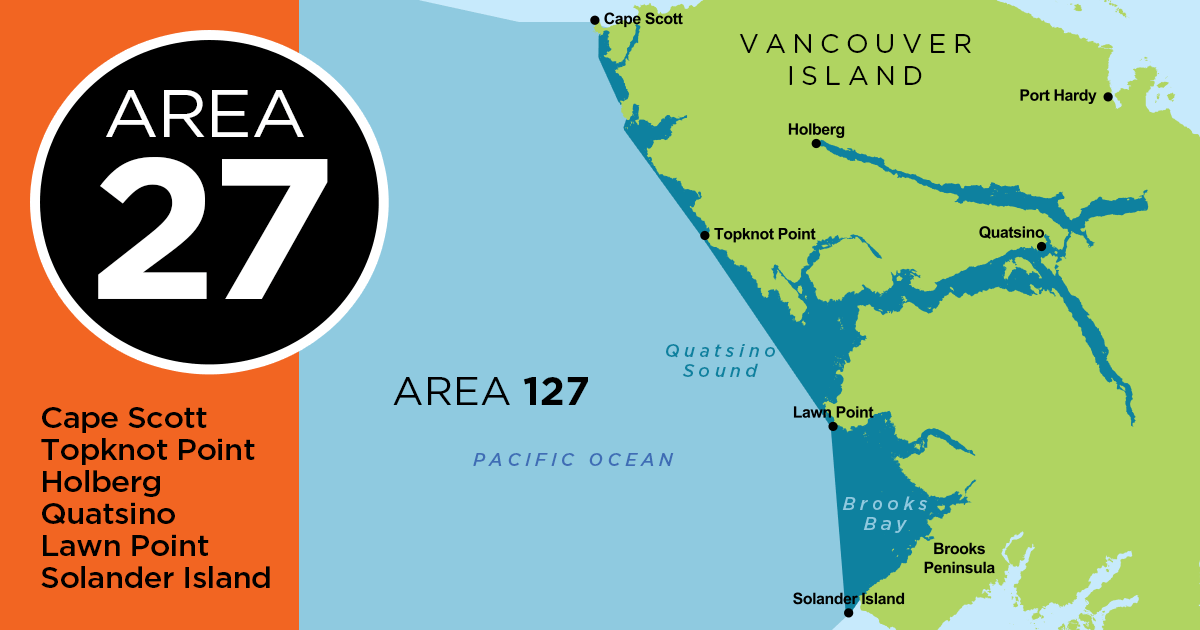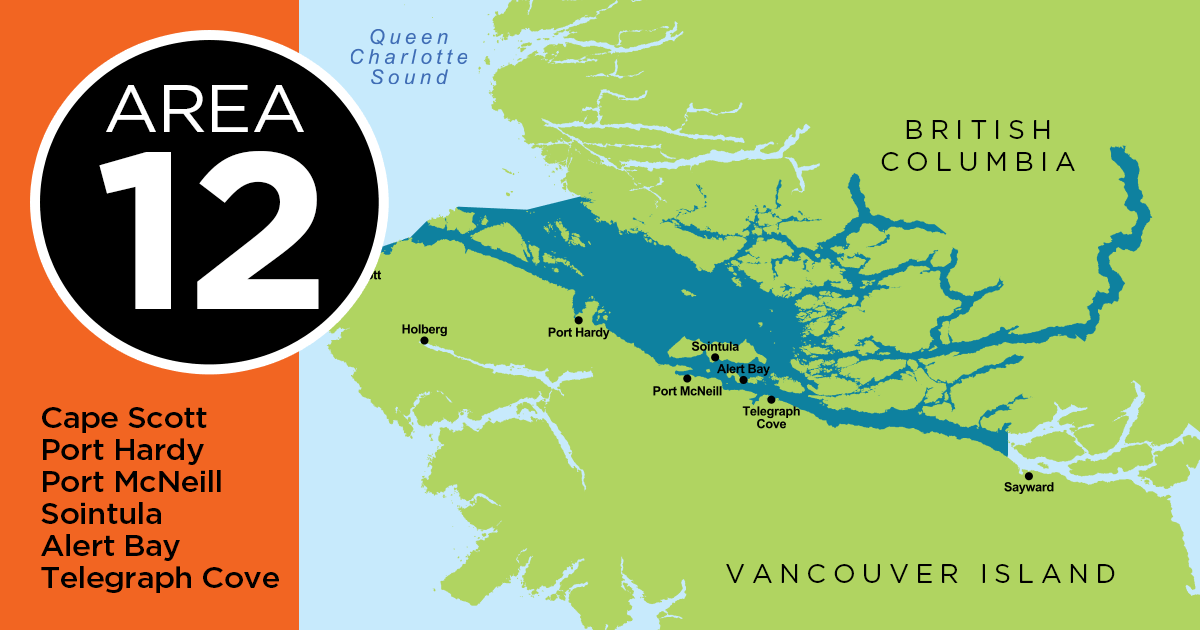
The cold water of the Queen Charlotte Strait is renowned for saltwater fishing and diving. The region’s remoteness was first penetrated by a gravelled logging road from Gold River in 1964, then a paved highway from Sayward in 1979, and today the highway stretches 237 km south to Campbell River.
Port Hardy has some 4,100 residents, and one of its mainstay industries is forestry, plus it is the Northern Vancouver Island hub for commercial salmon fishing. The economy relies greatly on tourism, especially the ferries to Prince Rupert, another popular tourist destination in British Columbia. Check with BC Ferries for departures date. Tourist traffic in the summer is immense, and hotels and restaurants usually find themselves with no room to accommodate all travelers.
The waters of Queen Charlotte Strait harbour all seven species of Pacific salmon. Numerous chinooks in excess of 50 pounds are taken annually. Although saltwater fishing anywhere on the British Columbia coast is controlled by weather conditions, this becomes even more evident in Queen Charlotte Strait. Considered by mariners to be one of the most treacherous stretches of water on the coast, it has exacted a terrible toll of lost lives. While one can certainly enjoy the area’s world class salmon and bottom fishing, it must be done with caution and common sense. The secret to enjoying a safe and successful fishing trip at Port Hardy is to plan well ahead.
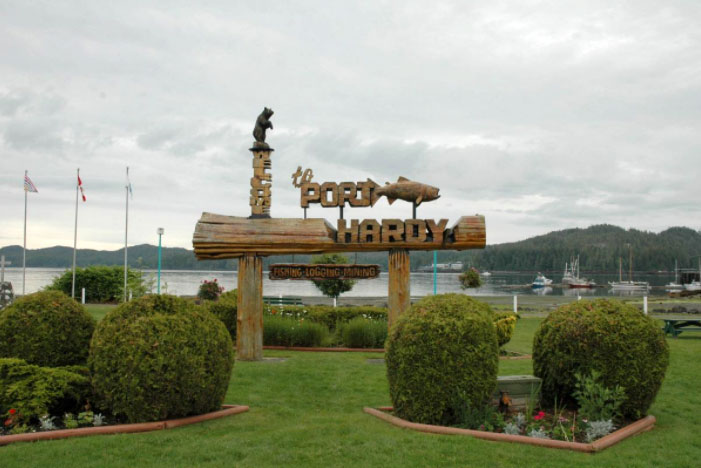
Accommodations
Alternating waves of travellers flood the city in conjunction with the departure or arrival of the Prince Rupert ferry, so all of the city’s accommodations are booked to capacity every other day. Thus, those planning to stay for extended periods find it necessary to book at least three to six months in advance.There are no problems with trailer spots and camp sites, all sorts are available, even during the ferry nights, try Quatse River Regional Park and Campground, Port Hardy RV Resort and Log Cabins or Wildwoods Campsite. The Quarterdeck Marina has 134 slips for moorage available on a daily, weekly or monthly basis, but it’s usually fully booked a year in advance and it’s extremely crowded.
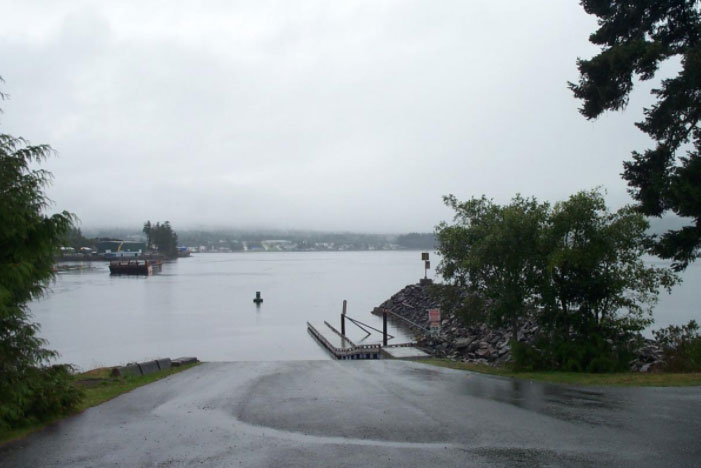
Two boat launch ramps are available. A free municipal ramp located at the Quarterdeck Marina is of concrete and three lanes wide. It is excellent, but watch the drop-off on extremely low tides. Paved parking for trailers and vehicles on daily, weekly, monthly basis is also available. And while there are fees to use the Fisherman’s Wharf boat ramp, the municipality provides free boat launching and parking and free day-use moorage at Bear Cove, which is located on the road to the BC Ferries terminal. Jim & Nita, owners of The Bait Shack and Castle Point Charters manage Bear Cove Rec Site for the District of Port Hardy and are the seasonal 24-hour caretakers from June 1 to Sept 1. There are also reserved slips available for weekly moorage; contact Jim and Nita for more information at (250) 902-7145.
Weather
Port Hardy enjoys a fairly moderate climate. Average winter temperatures are slightly warmer than most of Vancouver Island, and slightly cooler during the summer. However, the rainfall averages 100 to 120 inches a year, compared to Victoria’s 27, so good wet weather clothing is a must.
They call the summer northwesters ‘safe’ winds, but even they can get real nasty. On dull, overcast days the wind often stays down, but if the sun is shining, look out—that’s when you start looking over your shoulder at the water. When that northwester gets 35 to 50 miles an hour, six-foot waves aren’t uncommon. It can really play hell with small boats, and people are very wise to hole up on shore rather than try running for it.
Fishing
There are no “special” techniques to fishing for salmon or bottom fish around Port Hardy, but some tactics are more popular than others. Chinooks start toward the end of May and peak in August. The average is 20 to 25 pounds, but there is usually a dozen or more in the 30s caught every day. Anything in the 40- to 50-pound range is considered a good fish. The preferred method for chinook and coho is trolling with downriggers, getting down 60 to 150 feet using bait, either strip, whole herring or cut plug, either with or without a flasher. Tomic plugs and hoochies are extremely productive. In fact, at any given time, one out of two lures in the water will probably be a green hoochie.
Some years the coho start showing up around the first of July, but the 15th is closer to normal. They are big compared to bluebacks caught further south. Extremely small ones are three to four pounds, but the average is six to nine. By the first weekend of August you can be catching them 10 to 12 pounds. Some people surface troll with bucktails, but deep trolling is usually more productive. Occasionally coho are caught at 30 feet, but more often at 60 or lower.
A few anglers target specifically on sockeye, pinks and chum. Most are caught incidentally by chinook and coho anglers. Pinks are heavy during the odd years, and best in July and August. Ranging from five to seven pounds, occasionally to nine. They are out in the strait, but we get a local run that really boosts the numbers in Hardy Bay. Try trolling pink or red hoochies anywhere from the surface down to 100 feet.
Sockeye run as early as mid-June but are caught mainly in July and August, with a few still around in September. They average five or six pounds. Troll extremely slow in a straight line, with a small, red hoochy. It should also be sparse, so pull at least half of the strands off. The more lures you put down, the better your chances of multiple hook-ups.
Chums generally show up in August, and they average about seven or eight pounds, but there are some real bruisers and do they ever fight! On the subject of bottom fish, look at the marine chart and determine where the shoals, pockets and drop-offs are. However, the further offshore you get, the greater your chances of running into weather-related problems. There are plenty of good spots around the Gordons for small boaters, and those with larger, faster rigs can explore around the Deserters.
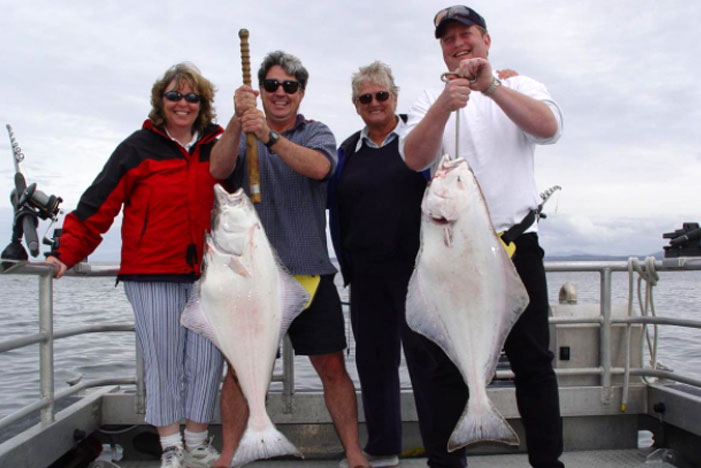
The best season for halibut is April, mainly because it’s just ahead of the commercial opening. They average about 30 to 50 pounds. Tides play an important role in the halibut fishery. Port Hardy gets some extremely high tides, big swings of 16 and 17 feet, that have a negative effect on bottom fishing. Look for neap tide periods, preferably in the fall because there is usually less wind. A popular method is to fish bait with a heavy sinker. It’s simple and relatively cheap. The main thing is to get it on the bottom and keep it there.
Other Activities
Primary land-based activity is hiking, as the trail selection ranges from easy riverfront strolls to epic, multi-day treks to Cape Scott and along the North Coast Trail.
Fresh water fishing on north Vancouver Island remains one of the best-kept secrets around. The majority of the lakes and rivers experience very light fishing pressure due to the isolated nature of the region. Logging roads provide the primary access to the northern lakes and rivers.
Steelhead rivers in this area include the largest river on Vancouver Island, the Nimpkish River, supported by good steelheading on the Cluxewe, Keogh, Quatse and Nahwitti Rivers, plus numerous other smaller streams.![]()
For more info contact:
Port Hardy Chamber of Commerce
7250 Market Street
Port Hardy, BC, VON 2PO
Toll-free: (866) 427-3901
Phone: (250) 949-7622
Visit the Store
$34.99
$34.99
Featured Catch
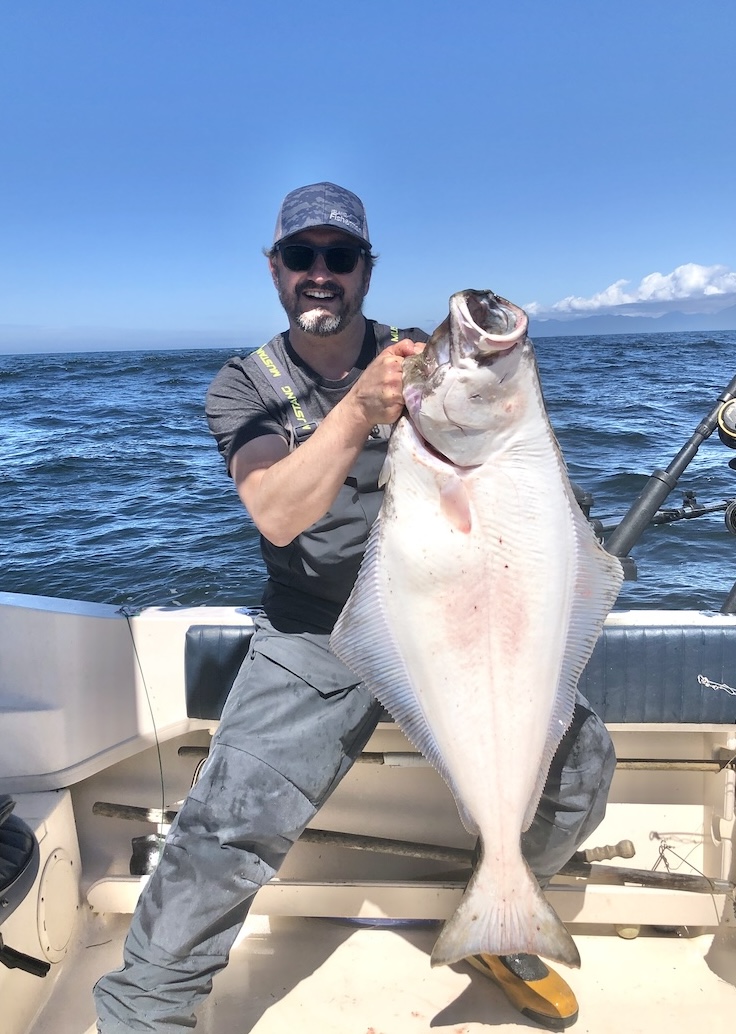
Joel Unickow halibut (Photo: Rob Frawley Lucky Strike Sportfishing Tofino)

